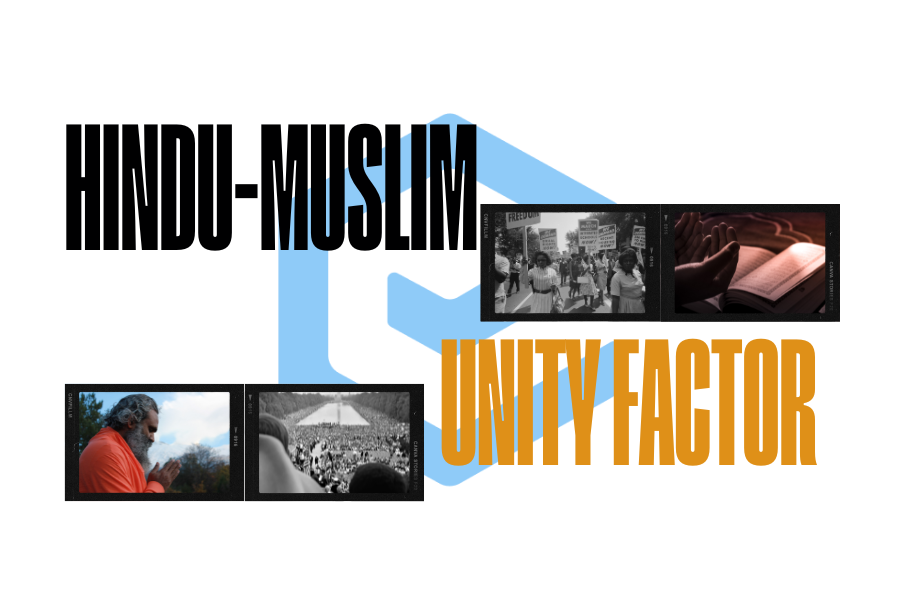
Hindu-Muslim unity stands as a testament to the rich tapestry of diversity and harmony within the cultural fabric of the Indian subcontinent. Rooted deeply in history, this notion embodies the intrinsic bond between two of the largest religious communities in the region, Hinduism and Islam. Despite occasional tensions and conflicts, the unity between Hindus and Muslims has often prevailed, showcasing moments of solidarity, cooperation, and coexistence throughout the centuries. This unity factor transcends religious boundaries, embracing shared cultural heritage, linguistic ties, and common aspirations for peace and prosperity. In contemporary times, it remains a pivotal aspect of India’s social and political landscape, embodying the nation’s ethos of pluralism and unity in diversity.
A significant factor during the revolt was the unity between Hindus and Muslims at all levels—among the people, soldiers, and leaders. All rebels recognized Bahadur Shah Zafar, a Muslim, as the emperor, and the initial response of Hindu sepoys in Meerut was to march towards Delhi, the capital of the Mughal Empire. Maulana Azad highlighted two notable aspects of the 1857 uprising: the remarkable sense of unity among Hindus and Muslims in India during that period, and the deep loyalty people felt towards the Mughal Crown. Rebels and sepoys, regardless of their religious background, respected each other’s sentiments. Upon successfully capturing a particular area, the immediate ban on cow slaughter was enforced. Hindu and Muslim individuals held significant leadership roles, as seen in examples like Nana Saheb having Azimullah, a Muslim expert in political propaganda, as an aide, and Laxmibai enjoying strong support from Afghan soldiers. Thus, the events of 1857 demonstrated that the people and politics of India were not inherently communal or sectarian before 1858.
Contents
- 1 Frequently Asked Questions (FAQs)
- 1.1 Q1: What is the significance of Hindu-Muslim unity?
- 1.2 Q2: How can Hindu-Muslim unity be achieved?
- 1.3 Q3: What historical examples highlight Hindu-Muslim unity?
- 1.4 Q4: What role does leadership play in fostering Hindu-Muslim unity?
- 1.5 Q5: Why is Hindu-Muslim unity essential in multicultural societies?
- 2 In case you still have your doubts, contact us on 9811333901.
Frequently Asked Questions (FAQs)
Q1: What is the significance of Hindu-Muslim unity?
A1: Hindu-Muslim unity is crucial for fostering communal harmony, peace, and progress in diverse societies like India. It promotes understanding, tolerance, and cooperation among different religious communities, contributing to the overall social fabric.
Q2: How can Hindu-Muslim unity be achieved?
A2: Hindu-Muslim unity can be achieved through various means, including promoting interfaith dialogue, emphasizing common values, respecting each other’s beliefs and practices, addressing socio-economic disparities, and countering divisive narratives propagated by extremists.
Q3: What historical examples highlight Hindu-Muslim unity?
A3: Historical instances like the Khilafat Movement in early 20th century India, where Hindus and Muslims joined hands to protest against British colonialism, and the contributions of leaders like Mahatma Gandhi and Maulana Abul Kalam Azad underscored the potential for unity across religious lines.
Q4: What role does leadership play in fostering Hindu-Muslim unity?
A4: Effective leadership plays a pivotal role in promoting Hindu-Muslim unity by advocating inclusive policies, condemning discrimination, and encouraging dialogue and cooperation between communities. Leaders who prioritize communal harmony can inspire positive change and bridge divides.
Q5: Why is Hindu-Muslim unity essential in multicultural societies?
A5: In multicultural societies, Hindu-Muslim unity is essential for maintaining social cohesion, preventing conflicts based on religious differences, and harnessing the collective potential of diverse communities for national development and prosperity.
In case you still have your doubts, contact us on 9811333901.
For UPSC Prelims Resources, Click here
For Daily Updates and Study Material:
Join our Telegram Channel – Edukemy for IAS
- 1. Learn through Videos – here
- 2. Be Exam Ready by Practicing Daily MCQs – here
- 3. Daily Newsletter – Get all your Current Affairs Covered – here
- 4. Mains Answer Writing Practice – here

